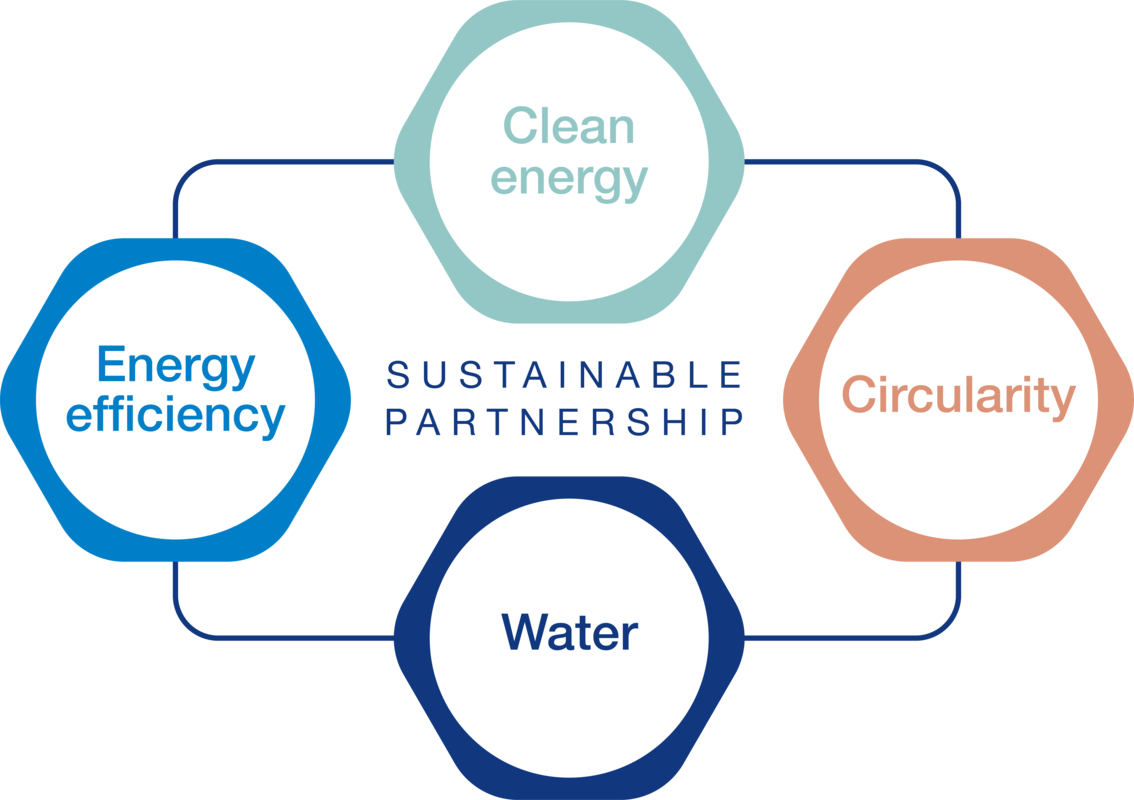Organic Rankine Cycle (ORC)
Today, generating clean electric power from low temperature heat is one of the most effective methods businesses already have for improving energy efficiency and their overall sustainable profile. Using a proven Organic Rankine Cycle (ORC) process makes it possible to transfer thermal heat for liquids or gases to produce carbon-neutral power in an efficient way. This is true whether the heat is coming from geothermal sources or industrial or commercial waste heat.
Regardless of the heat source, choosing the right heat exchanger is critical to maximizing the efficiency – and thus the sustainability – of your solution. Alfa Laval has worked closely with customers in a wide range of ORC projects. Our broad portfolio of plate heat exchanger technologies, in combination with our unique industry expertise and experience, ensure you can get the most efficient heat recovery to produce your clean electricity. Keep reading to learn how we can support your ORC project.
Sustainable heating of Dutch greenhouses
With the Netherlands pledging to be free of natural gas by 2030, the country’s vital greenhouse sector is already taking major steps toward implementing renewable energy sources in production. Learn how Alfa Laval is helping make it possible with unique plate heat exchanger solutions optimized to support the demands of geothermal energy production.
ORC: How it works
The basic principle of an ORC system can be thought of as the opposite of a heat pump. Where heat pumps use electrical power to create thermal energy for various purposes, an ORC system uses heat energy to generate electricity.
In a typical ORC design, a thermal energy source feeds an evaporator to drive an expander or “reverse compressor”, which in turn generates the electricity. The provider of the heat can be natural, such as in the case of geothermal energy, or waste heat from any number of industrial waste heat sources. In this way, the ORC design makes it possible to sustainably take advantage of existing heat energy that would otherwise be lost into the atmosphere.
Heat exchangers are a critical element in the ORC system and are used in several stages of the cycle. They function as evaporators, condensers, and regenerators or economizers (see the accompanying diagram for a clearer illustration). Using the most optimal plate heat exchanger technology for the duty ensures the system can provide the most reliable, efficient, and therefore sustainable, electricity generation.
Our solutions
Alfa Laval GHR
There is almost always room to continue reducing power consumption and related costs by reclaiming the energy lost as exhaust gas heat. The Alfa Laval GHR is gas heat recovery heat exchanger especially designed for this purpose. It enables efficient waste heat recovery from from small and medium gas engines, turbines and clean process flue gases, to further increase your energy efficiency.
Alfa Laval gas-to-liquid plate exchangers
From exceptionally high temperatures to media with extremely asymmetrical flow rates, Alfa Laval’s gas-to-liquid portfolio handles more than other plate heat exchangers. Built with a revolutionary “dimple” plate design, they provide efficient heat recovery and very low pressure drop in gas applications – all within a significantly smaller footprint than tubular technologies.
Alfa Laval semi-welded plate-and-frame heat exchangers
Alfa Laval’s industrial semi-welded plate heat exchangers are suitable for refrigeration, chemical processes and various kinds of industrial utility duties. Their unique RefTight™ sealing system guarantees reliable, long-term sealing between the welded channels because the laser weld is on the outside of the ring gasket groove. At the same time, a smooth surface ensures a tight uniform seal over the entire gasket ring.
Wet Surface Air Coolers
Alfa Laval Niagara Wet Surface Air Coolers (WSAC®) are custom built, closed-loop cooling and condensing systems that combine high performance, low operating costs, compact size and reliable operation. They provide an attractive option for the final condensing application by pushing lower condensing temperatures and therefore maximising energy output from the ORC.

Energy efficiency
Clean energy
Sustainable partnership
Contact us to learn more
Contact us today for more information about our sustainable solutions
